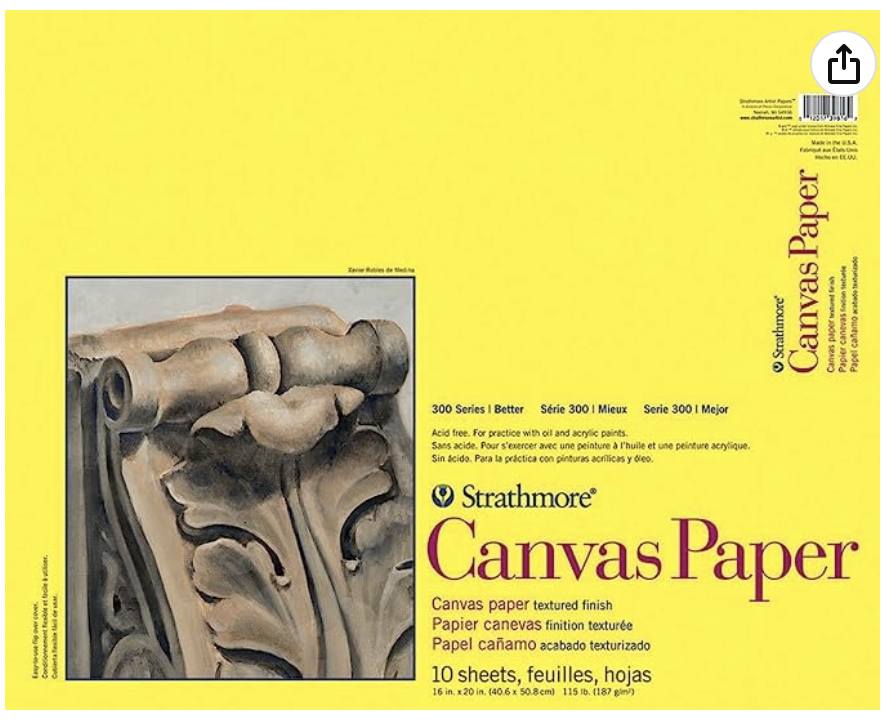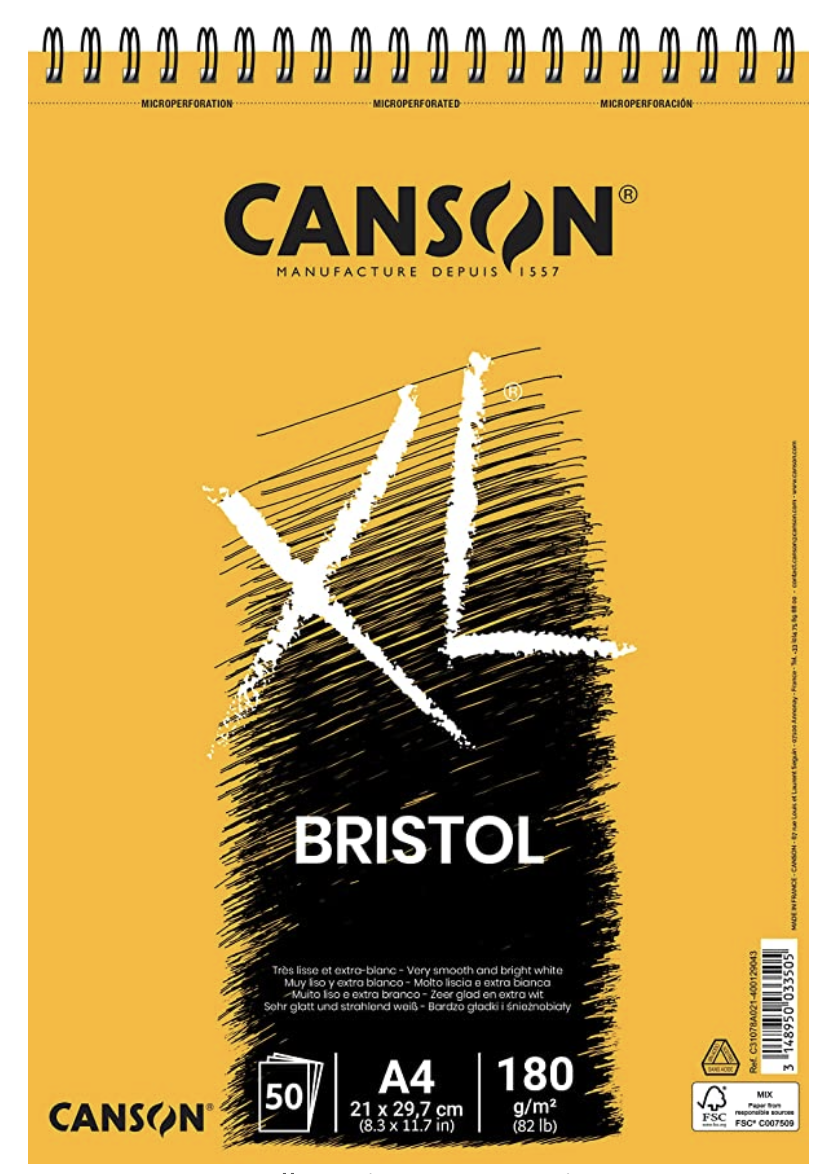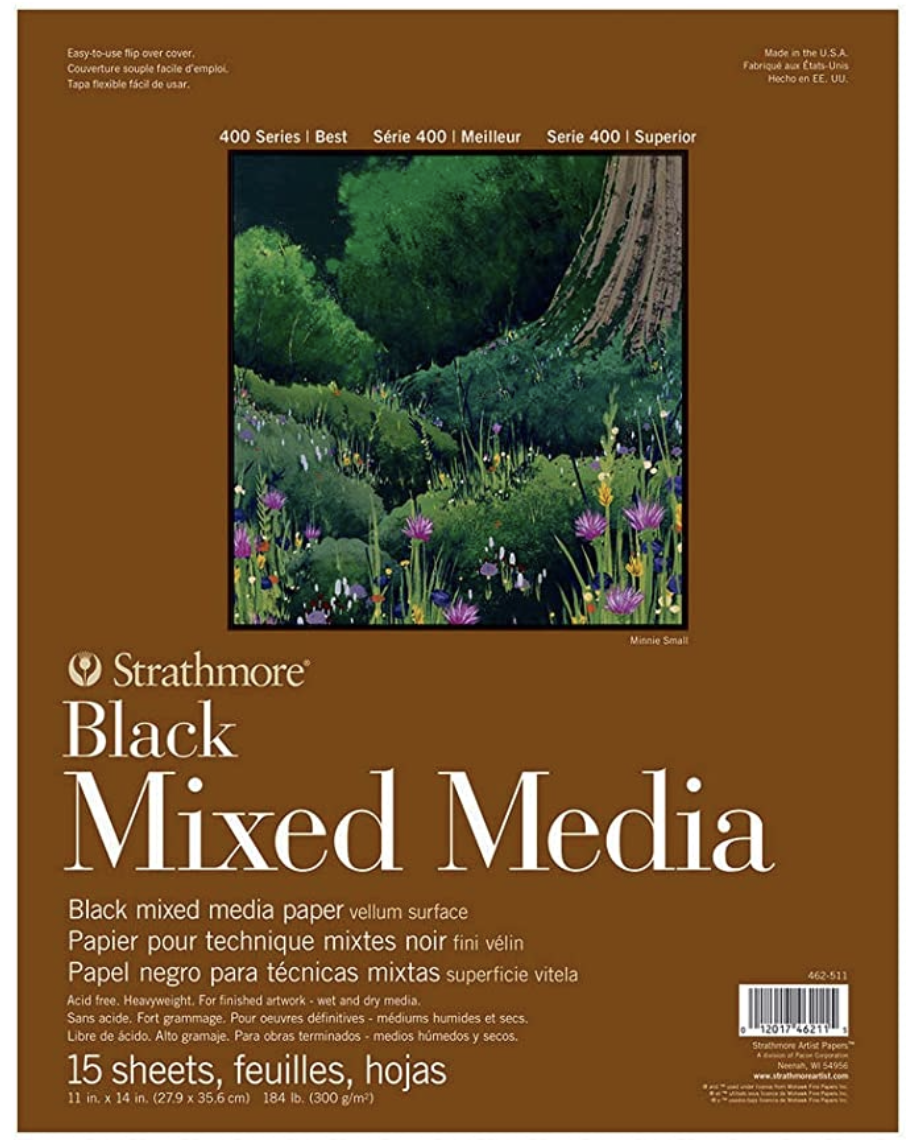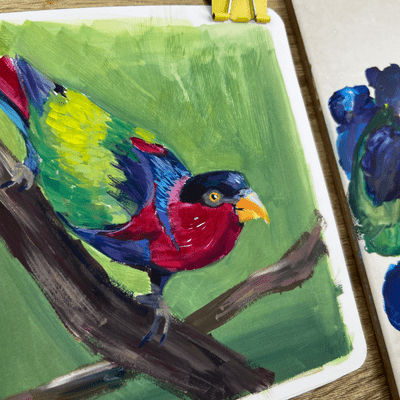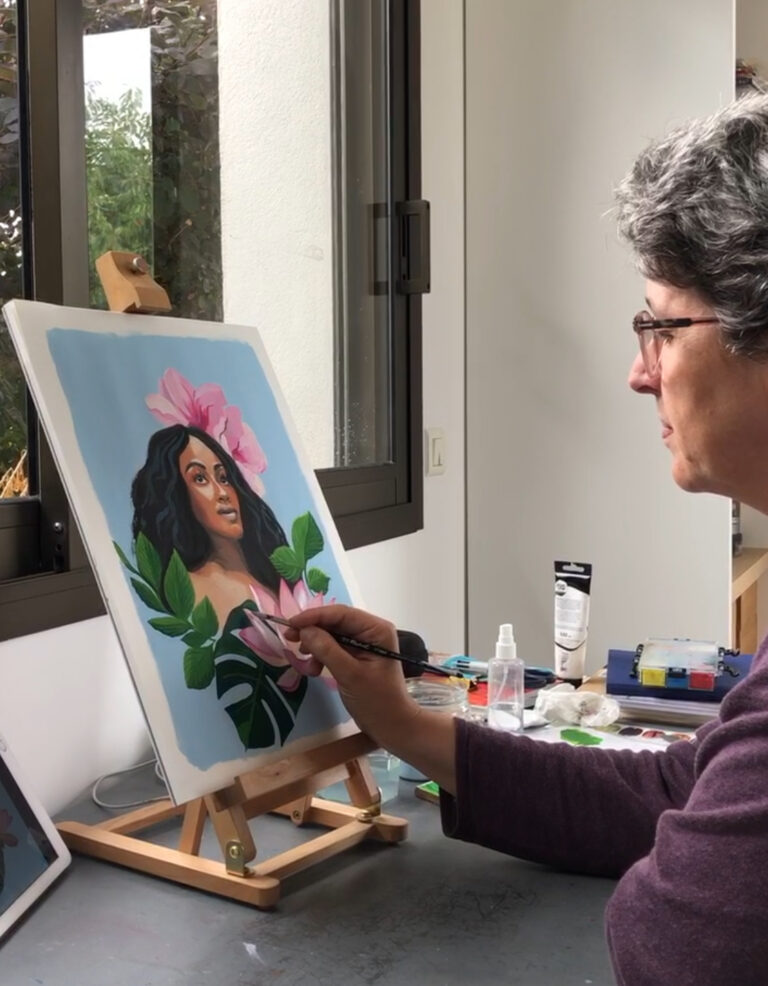Best paper for gouache paint
As an artist, selecting the appropriate paper for your artwork is crucial to achieving the desired results. When it comes to using gouache paint, finding the optimal paper is even more essential to ensure that your colors remain vibrant and the paint adheres correctly. This blog post provides guidance on choosing the best gouache painting project. Also, I’ll share some of my favorite papers.
Table of Contents
You can use the flowchart below to determine your best paper for gouache painting.
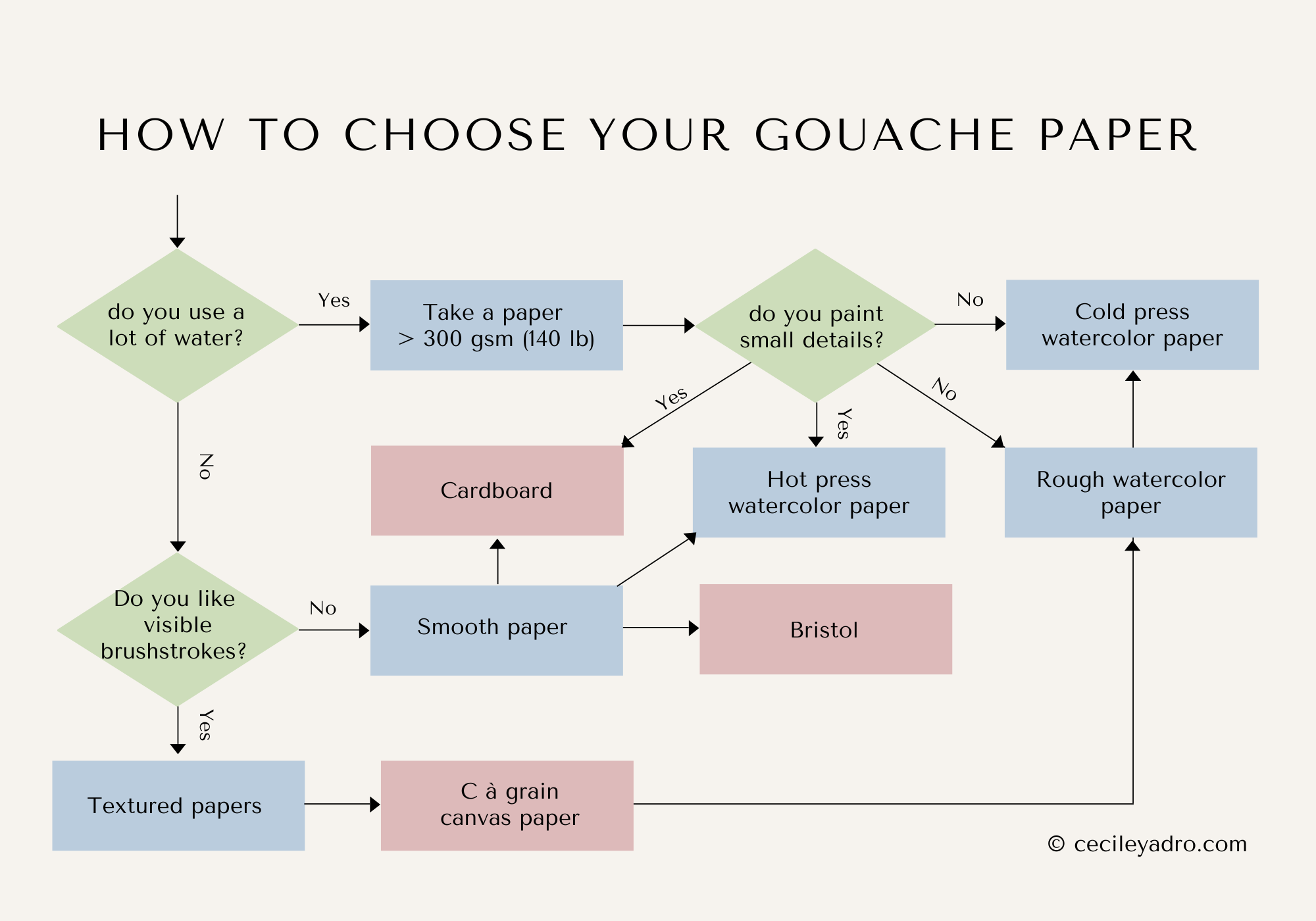
First things first, what is this project for? is it practice just for you, a commission, or something you plan to sell? This will determine if you’re using a sketchbook or not. Let’s say it’s on loose paper, as you will have more choices than in sketchbooks.
Watercolor paper
Watercolor paper is popular for gouache painting because it’s absorbent and holds paint well.
Watercolor paper comes in three types:
- Hot press has a smooth and fine tooth surface that’s perfect for detailed painting.
- Cold press has a textured surface that feels soft to the touch.
- Rough texture: allows for more dramatic brush strokes and dry brush techniques.
For gouache painting, you don’t need to buy 100% cotton paper, which is the most expensive. You can get cellulose paper, and you’ll be okay with the coverage of gouache paint.
The weight of the paper is the most important for gouache painting. Even if gouache uses less water than watercolor, you still use water. I always use 140 lb or 300 gsm paper, so I’m sure it won’t warp or buckle.
You can watch this video where I talk about gouache papers.
Canvas paper
You can find it under the name ‘acrylic paper’ or ‘oil paper.’ It’s canvas, primed and seized, in pads. Some artists love painting with gouache on this canvas paper, and some don’t. It’s a matter of preference.
This paper will consume a lot of paint, as you need to fill all the gaps in the weaving. The surface is very absorbent and can be challenging to work with. If you want to try it, start with a small piece of canvas paper (not more than 10 x 15 cm), as filling large canvases with gouache would be very expensive.
Bristol paper
The surface of bristol paper is perfectly smooth so that you can paint fine details with your smallest brush. Although the lack of texture might be a problem, some cheap gouache paints, like Himi, will adhere poorly to the surface.
Also, if your style includes dry techniques, you will have trouble making texture effects on this paper. I refer to using a dry brush and wiping it on the paper to achieve a rough brushstroke. In the image below, the paper on the right side is cold press watercolor paper on the left bristol. If you apply light pressure with a dry brush, you will enhance the structure of the paper, and bristol paper is smooth, so the texture is less visible.
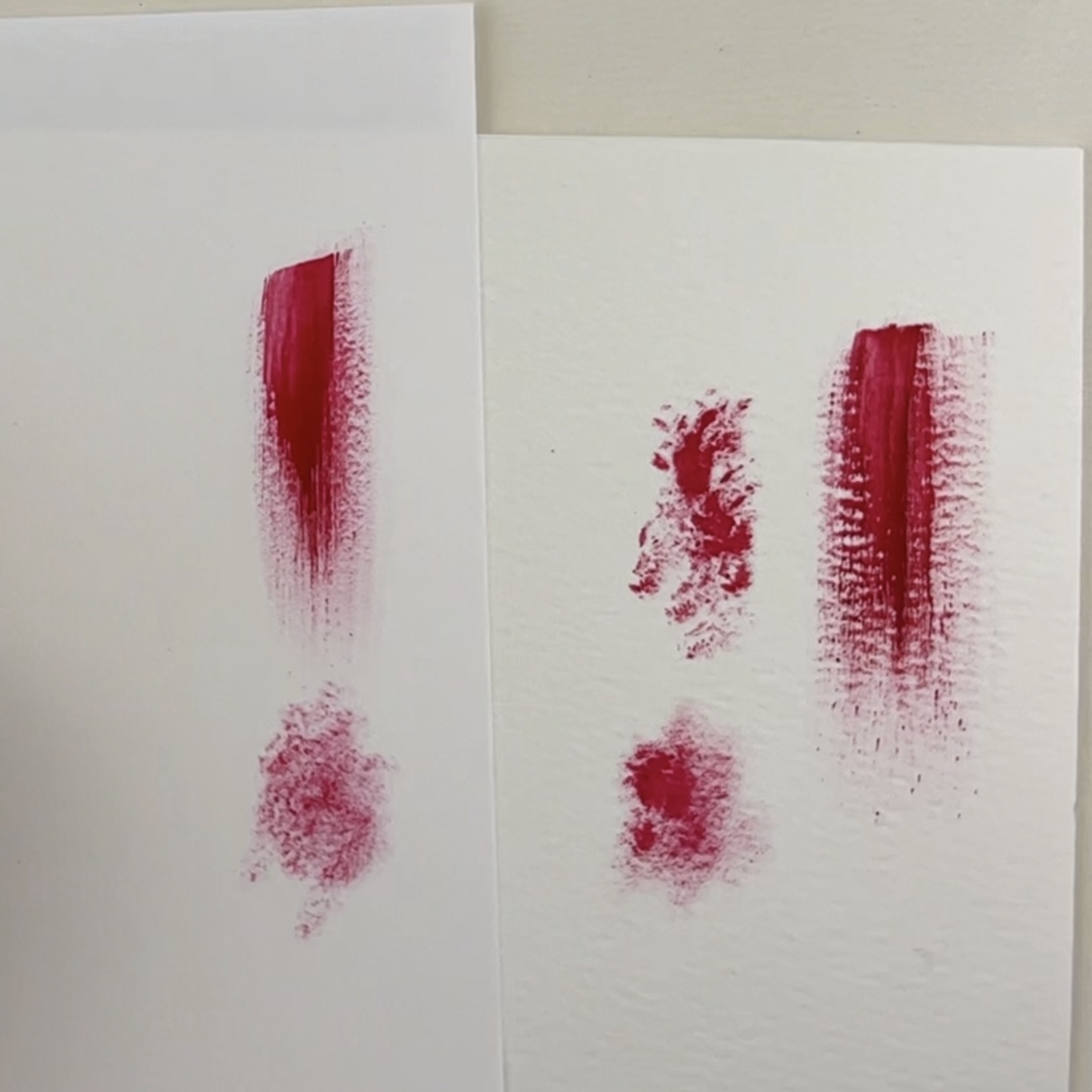
Cardboard
You can also use cardstock or cardboard as an alternative to bristol paper if you don’t mind the texture of those surfaces. The only important thing is that your gouache paints stick well to them.
The thickness of cardboard is perfect for gouache, but if you don’t like the texture, you could glue a sheet of textured paper on it and get the best of both papers. The only thing to remember is that you can only use a little water on cardboard, which will absorb too much water, making the paper soggy and unusable.
I usually recycle packing cardboard for this. The background color is great for portraits.
Toned paper
Gouache seems to pop up on toned paper! Use a cool background for warm subjects and warm background for cool subjects. The idea is to let the paper do the job!
It can be black, muted, earth tones, blues, or bright colors. It’s a great way to have your painting on an even background without painting everything, which can use a lot of paint. Consider that having a colored background will change your perception of colors when painting. So it might be tricky at first.
Paper shape
You can buy large sheets like watercolor paper and cut them to your needs. It’s less expensive, but the shipping charge may be more prohibitive if you purchase online.
You can buy bulk sheets of paper, and if you use a lot of water in your gouache painting, you will have to tape it before painting.
You can get pads glued on one side or four sides, which is very convenient for watery painting, as you don’t need to tape the paper.
You could also buy sketchbooks, and I love them, but sometimes you don’t find the exact paper you want for a project. You could also make your own with the best paper for you.
Conclusion
No perfect paper for gouache painting is just the best for you, depending on your art style. Try different kinds of paper to find the one that fits your needs. The most important thing is to have fun and enjoy yourself with your painting! You can learn everything about gouache supplies here.
CecileYadro.com is an Amazon Associate. As an Associate, we earn from qualifying purchases. We also maintain affiliate relationships with other companies. Purchases made through affiliate links pay us a commission but do not increase the cost to the buyer. For a full list, read our affiliate disclosure statement.


